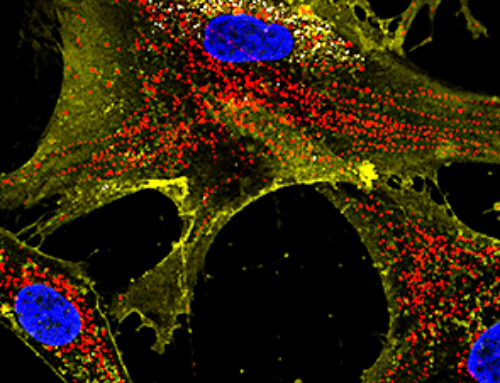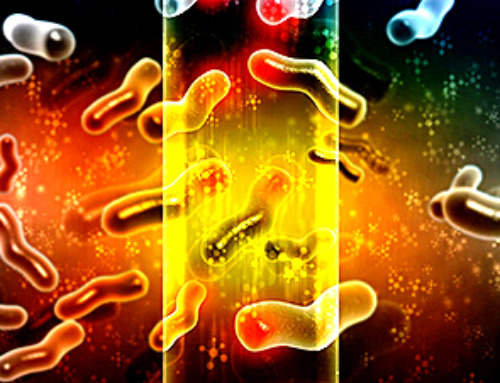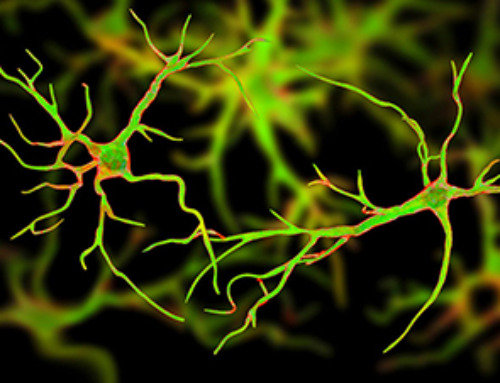More efficient and longer lasting glucose-responsive insulin that eliminates the need for people with type 1 diabetes to measure their glucose levels could be a step closer thanks to a Monash University-led project.
The researchers from Monash University, RMIT University, The University of Melbourne and the Baker Institute developed the system to respond to glucose, which current insulin does not.
Co-first author Dr. Rong Xu, from the Monash University Central Clinical School’s Australian Center for Blood Diseases, and Dr. Sukhvir Kaur Bhangu from RMIT University and the University of Melbourne said if it worked in humans, only two injections would be needed per day.
Current insulin therapy requires people to monitor their blood sugar throughout the day and take multiple, carefully calculated doses based on food intake, exercise, stress, illness and other factors.
Some must inject themselves up to five times a day. Continuous glucose monitoring devices remove, or at least reduce, the need for finger pricks, and insulin pumps can automatically deliver insulin, but they are very expensive and still are not always able to calculate the correct amount of insulin to be given.
The multidisciplinary team developed a new “artificial pancreas system” using phytoglycogen nanoparticles, which are chains on glucose molecules dubbed a “nanosugar platform” as they are made of glucose, to deliver and release insulin in response to glucose levels in the blood.
This engineered nanosugar platform enabled rapid and sustained glucose-responsive insulin delivery, which was longer lasting and smarter than other systems.
Dr. Xu said it required only one injection every 12 hours and self-regulated. “This system would mean fewer injections and, potentially, no need to measure glucose,” Dr. Xu said.
The research emerged from an NHMRC Ideas Grant awarded to co-lead author and Head of Monash University’s Australian Center for Blood Diseases NanoBiotechnology Laboratory, Professor Christoph Hagemeyer, co-lead author and RMIT Associate Professor Francesca Cavalieri, and co-author Professor Frank Caruso at the University of Melbourne to develop this revolutionary type of insulin.
Professor Hagemeyer said more research was needed but the results were promising. He said the nanosugar platform was biodegradable, which enabled rapid and extended glucose control in two different models of type 1 diabetes with a single injection.
“The nanosugar particles are engineered to control insulin release and absorption through the lymphatic system into the blood,” he said.
Professor Cavalieri said the research team, which includes several clinicians, now hoped to secure funding to continue the project and eventually undertake clinical trials. “This new method is not only efficient, it’s biodegradable and uses natural methods, which significantly reduces the chances of adverse affects or immune reactions,” she said.
News
New skin-permeable polymer delivers insulin without needles
A breakthrough zwitterionic polymer slips through the skin’s toughest barriers, carrying insulin deep into tissue and normalizing blood sugar, offering patients a painless alternative to daily injections. A recent study published in the journal Nature examines [...]
Multifunctional Nanogels: A Breakthrough in Antibacterial Strategies
Antibiotic resistance is a growing concern - from human health to crop survival. A new study successfully uses nanogels to target and almost entirely inhibit the bacteria P. Aeruginosa. Recently published in Angewandte Chemie, the study [...]
Nanoflowers rejuvenate old and damaged human cells by replacing their mitochondria
Biomedical researchers at Texas A&M University may have discovered a way to stop or even reverse the decline of cellular energy production—a finding that could have revolutionary effects across medicine. Dr. Akhilesh K. Gaharwar [...]
The Stunning New Push to Protect the Invisible 99% of Life
Scientists worldwide have joined forces to build the first-ever roadmap for conserving Earth’s vast invisible majority—microbes. Their new IUCN Specialist Group reframes conservation by elevating microbial life to the same urgency as plants and [...]
Scientists Find a Way to Help the Brain Clear Alzheimer’s Plaques Naturally
Scientists have discovered that the brain may have a built-in way to fight Alzheimer’s. By activating a protein called Sox9, researchers were able to switch on star-shaped brain cells known as astrocytes and turn them into [...]
Vision can be rebooted in adults with amblyopia, study suggests
Temporarily anesthetizing the retina briefly reverts the activity of the visual system to that observed in early development and enables growth of responses to the amblyopic eye, new research shows. In the common vision [...]
Ultrasound-activated Nanoparticles Kill Liver Cancer and Activate Immune System
A new ultrasound-guided nanotherapy wipes out liver tumors while training the immune system to keep them from coming back. The study, published in Nano Today, introduces a biodegradable nanoparticle system that combines sonodynamic therapy and cell [...]
Magnetic nanoparticles that successfully navigate complex blood vessels may be ready for clinical trials
Every year, 12 million people worldwide suffer a stroke; many die or are permanently impaired. Currently, drugs are administered to dissolve the thrombus that blocks the blood vessel. These drugs spread throughout the entire [...]
Reviving Exhausted T Cells Sparks Powerful Cancer Tumor Elimination
Scientists have discovered how tumors secretly drain the energy from T cells—the immune system’s main cancer fighters—and how blocking that process can bring them back to life. The team found that cancer cells use [...]
Very low LDL-cholesterol correlates to fewer heart problems after stroke
Brigham and Women's Hospital's TIMI Study Group reports that in patients with prior ischemic stroke, very low achieved LDL-cholesterol correlated with fewer major adverse cardiovascular events and fewer recurrent strokes, without an apparent increase [...]
“Great Unified Microscope” Reveals Hidden Micro and Nano Worlds Inside Living Cells
University of Tokyo researchers have created a powerful new microscope that captures both forward- and back-scattered light at once, letting scientists see everything from large cell structures to tiny nanoscale particles in a single shot. Researchers [...]
Breakthrough Alzheimer’s Drug Has a Hidden Problem
Researchers in Japan found that although the Alzheimer’s drug lecanemab successfully removes amyloid plaques from the brain, it does not restore the brain’s waste-clearing system within the first few months of treatment. The study suggests that [...]
Concerning New Research Reveals Colon Cancer Is Skyrocketing in Adults Under 50
Colorectal cancer is striking younger adults at alarming rates, driven by lifestyle and genetic factors. Colorectal cancer (CRC) develops when abnormal cells grow uncontrollably in the colon or rectum, forming tumors that can eventually [...]
Scientists Discover a Natural, Non-Addictive Way To Block Pain That Could Replace Opioids
Scientists have discovered that the body can naturally dull pain through its own localized “benzodiazepine-like” peptides. A groundbreaking study led by a University of Leeds scientist has unveiled new insights into how the body manages pain, [...]
GLP-1 Drugs Like Ozempic Work, but New Research Reveals a Major Catch
Three new Cochrane reviews find evidence that GLP-1 drugs lead to clinically meaningful weight loss, though industry-funded studies raise concerns. Three new reviews from Cochrane have found that GLP-1 medications can lead to significant [...]
How a Palm-Sized Laser Could Change Medicine and Manufacturing
Researchers have developed an innovative and versatile system designed for a new generation of short-pulse lasers. Lasers that produce extremely short bursts of light are known for their remarkable precision, making them indispensable tools [...]





















